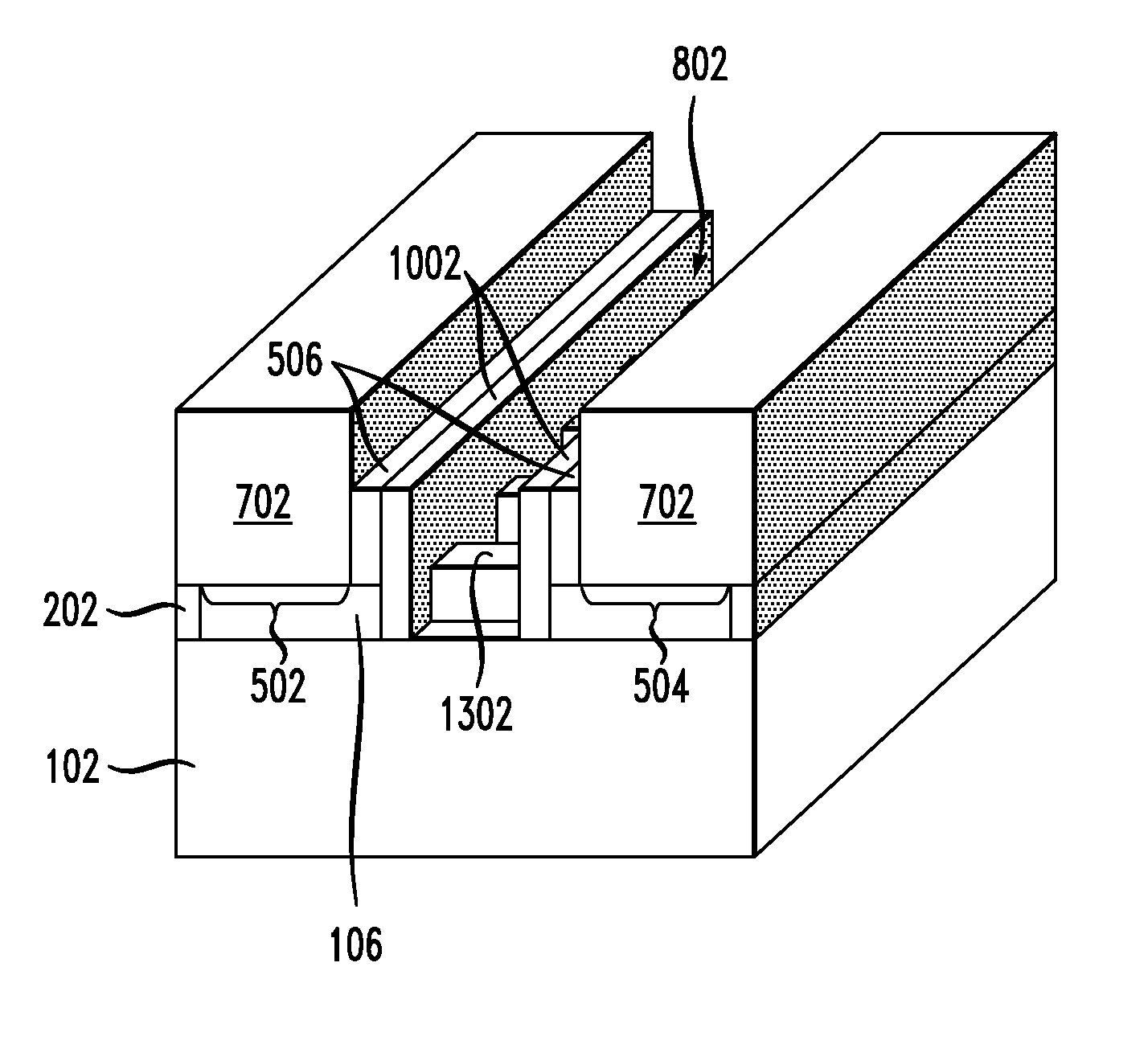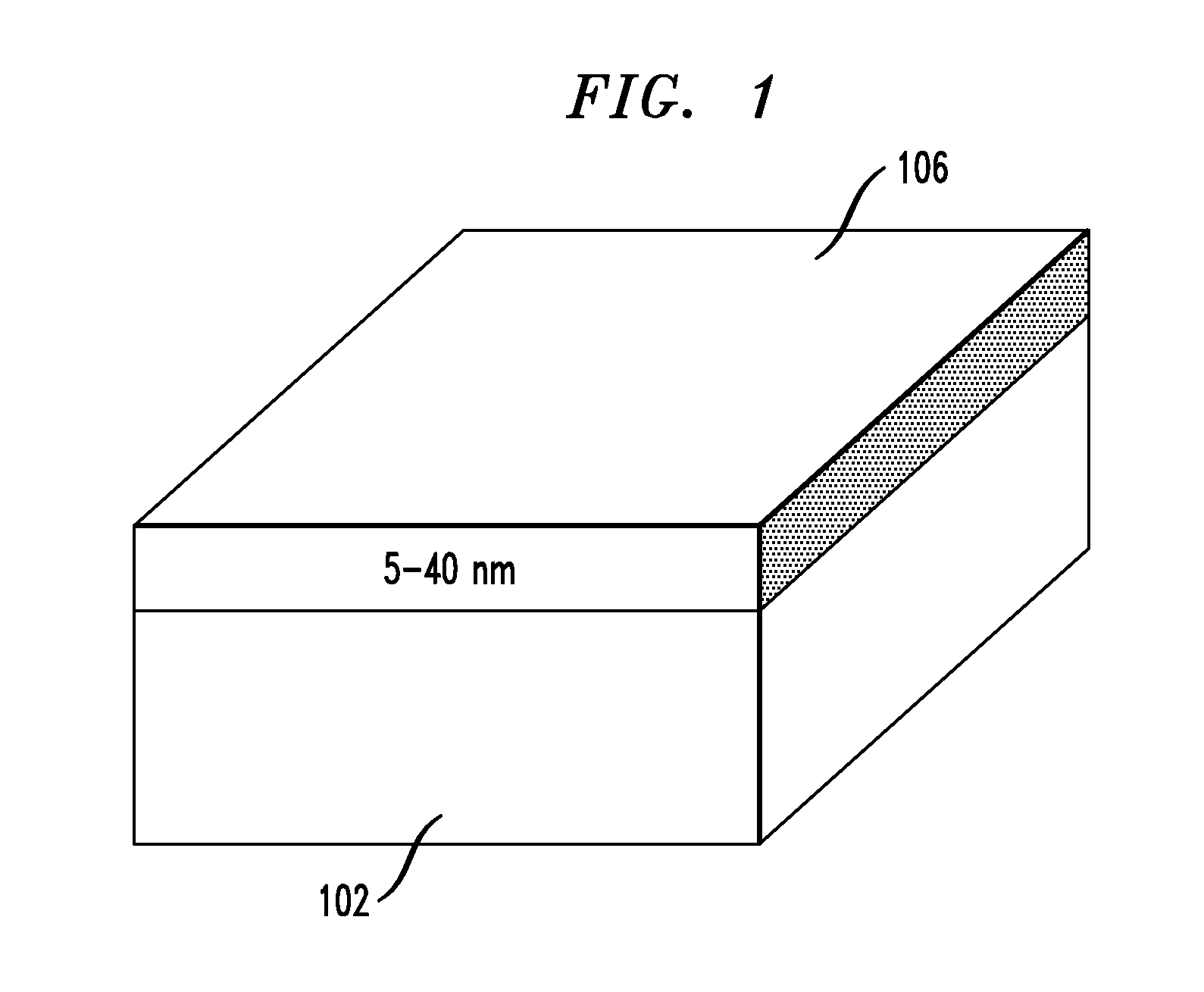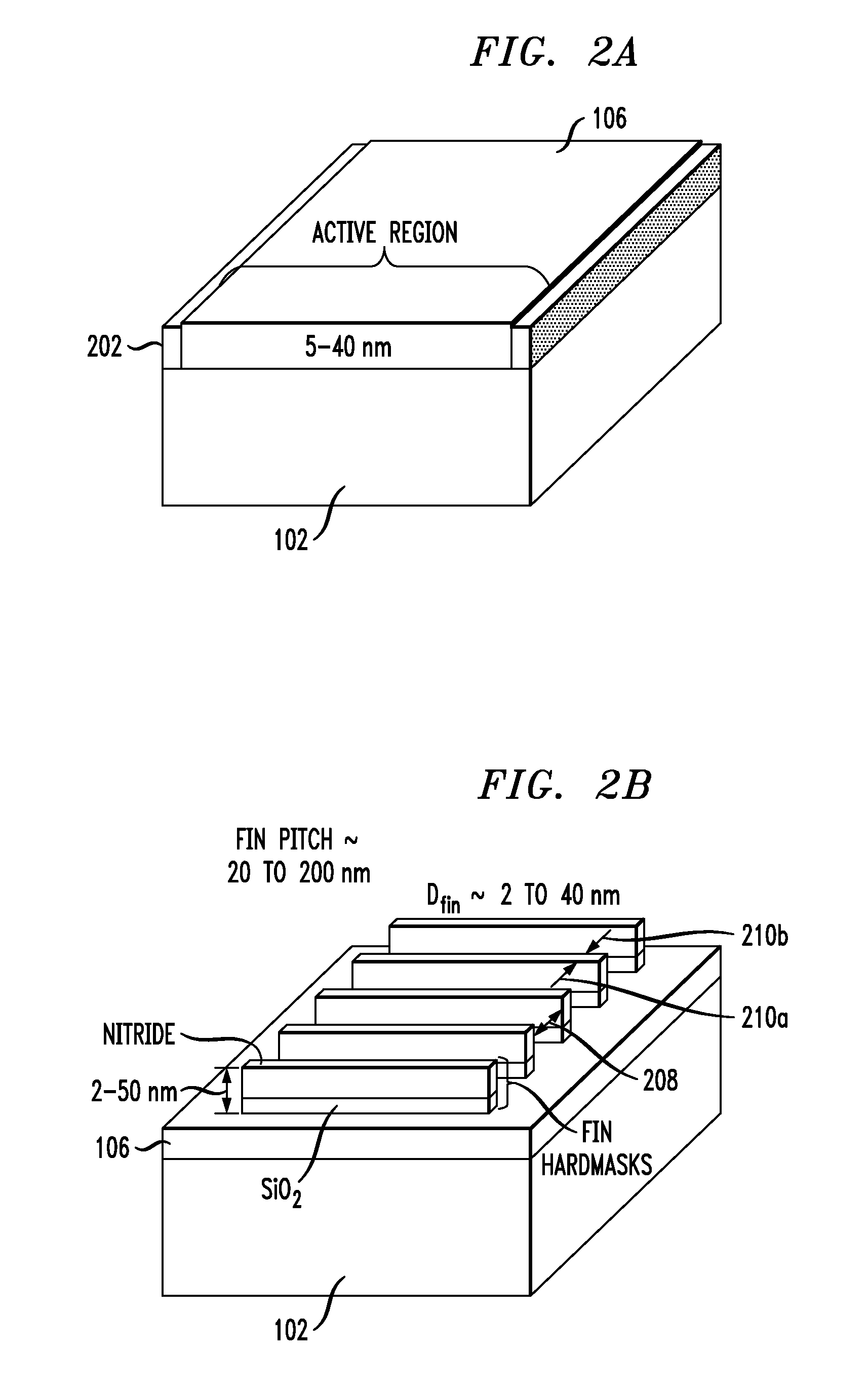Fin-Last Replacement Metal Gate FinFET
a technology of fin-last and gate, which is applied in the field of integrated circuits, can solve the problems of difficult alignment of landing pads with gate, significant fabrication challenges, and inability to properly and consistently contact source and drain
- Summary
- Abstract
- Description
- Claims
- Application Information
AI Technical Summary
Benefits of technology
Problems solved by technology
Method used
Image
Examples
Embodiment Construction
[0042]FIGS. 1-15 are diagrams illustrating an exemplary methodology for fabricating a fin field effect transistor (FinFET) device. As will be described in detail below, the present techniques make use of a damascene gate process to construct source / drain regions that are self-aligned with the gate.
[0043]The fabrication process begins with a semiconductor-on-insulator (SOI) wafer. See FIG. 1. An SOI wafer typically includes a layer of a semiconductor material (also commonly referred to as a semiconductor-on-insulator layer or SOI layer) separated from a substrate by an insulator. When the insulator is an oxide (e.g., silicon dioxide (SiO2)), it is commonly referred to as a buried oxide, or BOX. According to the present techniques, the SOI layer will serve as an active layer of the device. Thus, the SOI layer will be referred to herein as an active layer. In the example shown in FIG. 1, the starting wafer includes an active layer 106 over a BOX 102. For ease of depiction, a substrate ...
PUM
 Login to View More
Login to View More Abstract
Description
Claims
Application Information
 Login to View More
Login to View More - R&D
- Intellectual Property
- Life Sciences
- Materials
- Tech Scout
- Unparalleled Data Quality
- Higher Quality Content
- 60% Fewer Hallucinations
Browse by: Latest US Patents, China's latest patents, Technical Efficacy Thesaurus, Application Domain, Technology Topic, Popular Technical Reports.
© 2025 PatSnap. All rights reserved.Legal|Privacy policy|Modern Slavery Act Transparency Statement|Sitemap|About US| Contact US: help@patsnap.com



